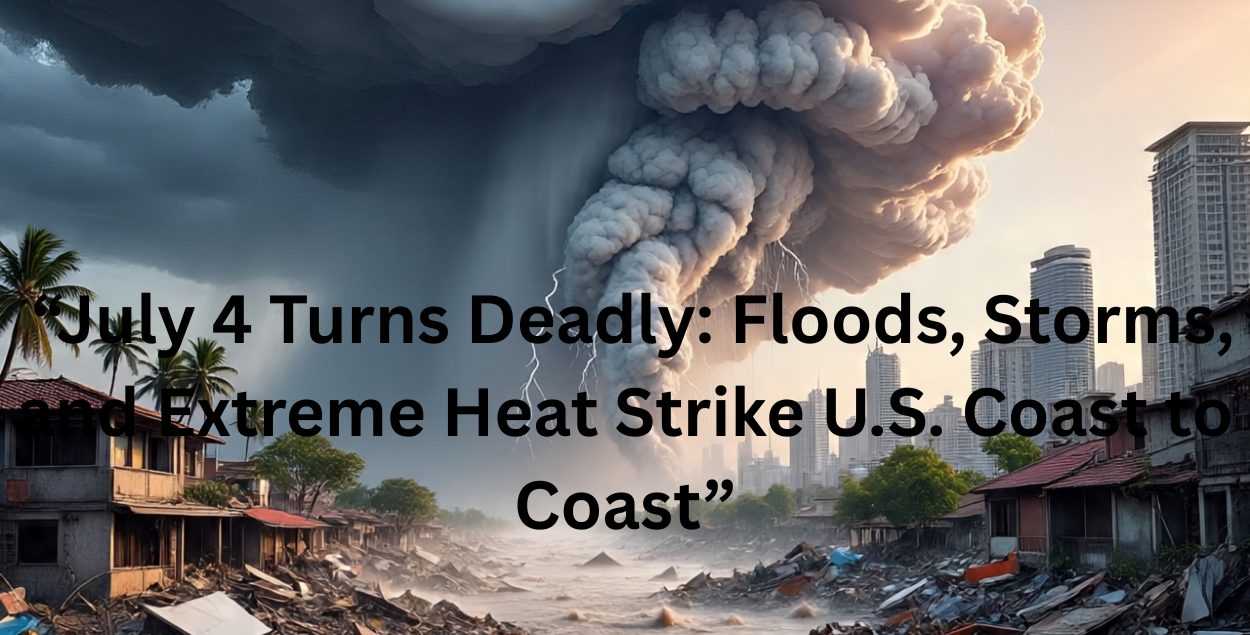FnF News
“Disaster on Display: America’s Fourth of July Ravaged by Floods, Storms, and Heat”
By Khadija Khan | FNF News | July 4, 2025
United States — While millions tuned in for a peaceful coast-to-coast celebration via livestream, what unfolded on camera was anything but festive. The July 4th “Live Webcams Around the U.S.A.” broadcast turned into a live record of climate disaster—capturing deadly flash floods in Texas, brewing storms in the Southeast, and punishing heatwaves in the Midwest.
This was not the visual postcard of patriotism many expected. Instead, it became a digital witness to the most turbulent Fourth of July in recent memory.
Texas Flash Floods: Tragedy on the Guadalupe River
In Central Texas, webcams from towns like Kerrville, Hunt, and Fredericksburg captured rising floodwaters as the Guadalupe River rose over 25 feet in 45 minutes. The flooding killed at least 13 people, including children from a summer camp, and left dozens more missing. Rescue operations unfolded live—airboats, helicopters, and emergency crews moved through submerged neighborhoods as streets vanished beneath brown currents.
All July 4 festivities in towns across the Hill Country were immediately canceled. Texas Governor Greg Abbott declared a state of disaster, calling the flooding “unprecedented” and warning more rain was expected over the weekend.
“No one expected this volume this fast,” a local sheriff told reporters.
“We went from celebration to catastrophe in minutes.”
([Source: FOX 10 Phoenix livestream, People Magazine, The Guardian, MySanAntonio.com])
Storm Systems Threaten the Southeast
Elsewhere, viewers watched as skies darkened over the Carolinas and Georgia. Webcams in Myrtle Beach, Savannah, and Orlando picked up signs of an incoming tropical depression, with whipping winds and ocean surges that canceled beach events and fireworks shows.
The National Weather Service issued flash flood watches and severe storm alerts for portions of the Southeast coast. Some counties began preemptive evacuations of low-lying areas.
“This is supposed to be a beach day,” one coastal resident said in a local news interview.
“Now we’re sandbagging the porch.”
Extreme Heat Grips the Plains and Midwest
In contrast to waterlogged states, the Midwest baked in silence. Webcams in Kansas City, Des Moines, and Chicago showed heat-shimmering roads and empty parks. The region entered a Level 3 HeatRisk as temperatures soared above 100°F, with power grids straining under air conditioning demand.
Health officials in Iowa and Missouri issued heat advisories and urged residents to avoid outdoor activities during peak daylight. In cities like St. Louis, cooling centers were opened to the public.
The Reality Streamed Live
This wasn’t a produced news segment or breaking news bulletin. It was raw, unfiltered America—a stitched-together view of a country simultaneously soaked, scorched, and storm-threatened on its most symbolic day.
What was meant to be a relaxing display of fireworks and flags instead showed emergency crews dragging boats down highways, black clouds rolling across coastlines, and thermometers blinking 106°F.
FNF News Analysis: July 4th Without Illusion
The FNF editorial team notes that this Independence Day’s livestream became a digital time capsule of American vulnerability. It highlighted how weather extremes have eroded the once-predictable rhythms of national holidays.
Instead of flags waving, there were sirens. Instead of fireworks, there were evacuation alerts. This broadcast illustrated not just weather patterns—but the cost of inaction and the consequences of a changing climate.

